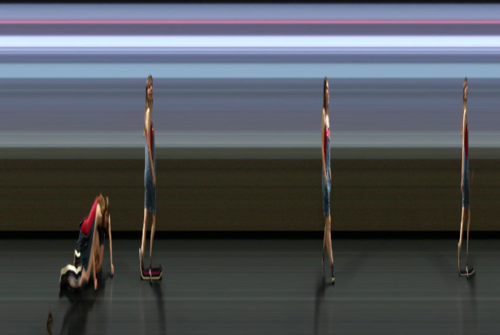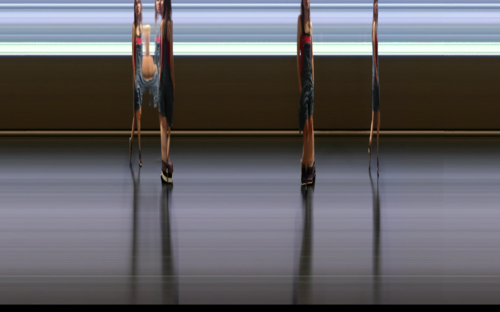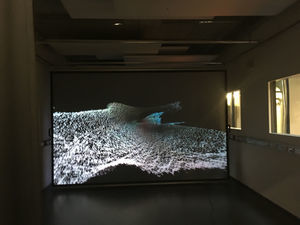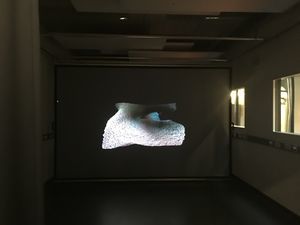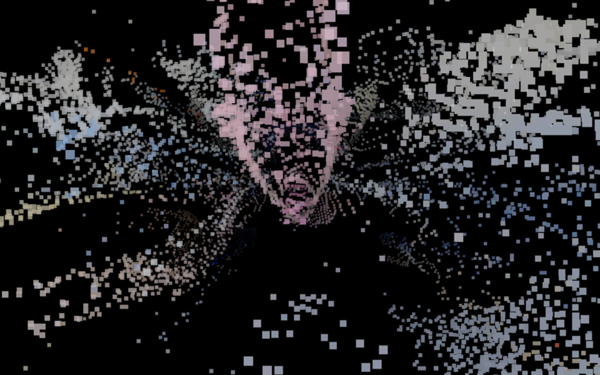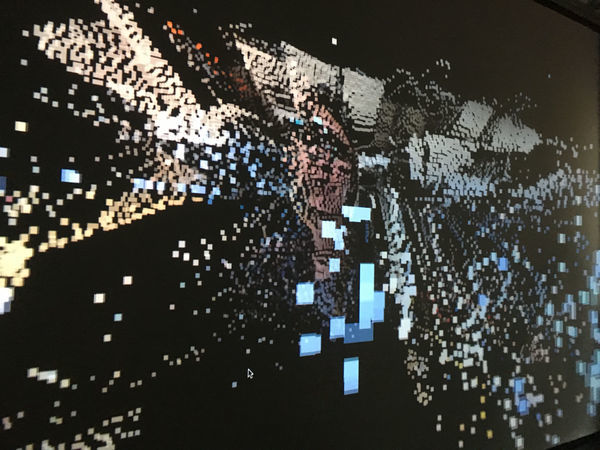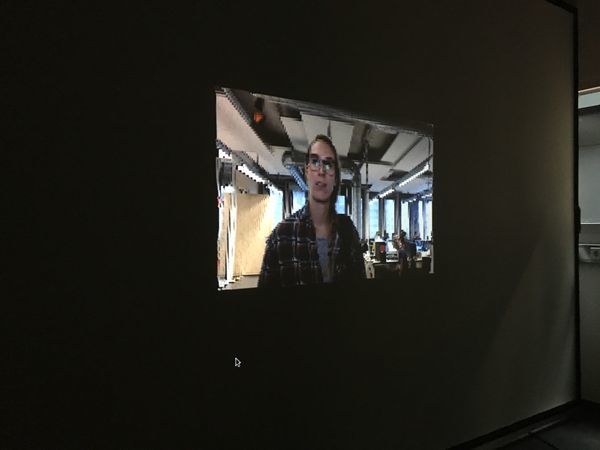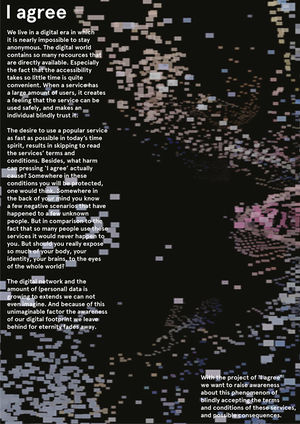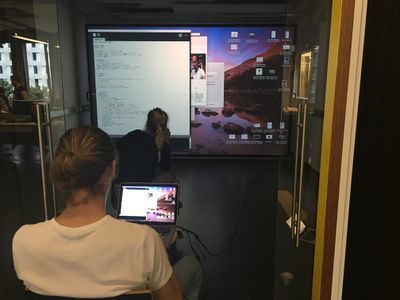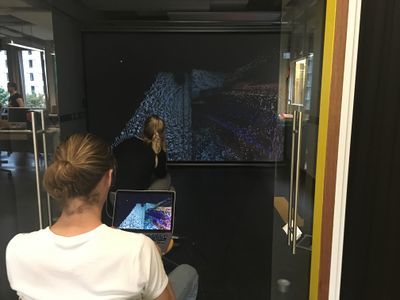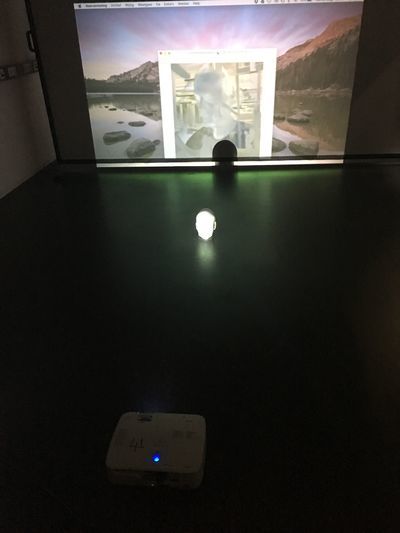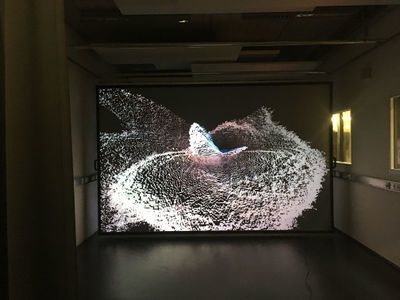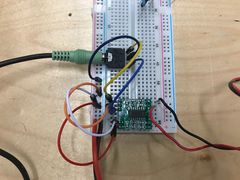User:Philip
Philip Ghering
0888689
Communicatie & Multimedia Design
http://www.philipghering.nl
Contents
Digital Craft minor 2017: How to be Human
Week 1 & 2 - On the body
My body part was the brain. These are the resources i used:
Inside the mind
Brain computer interface
Proof that Darwin was right
10 ways monkeys are more like us than we think
Your 21 senses
Proprioceptors
10 lesser known but important human senses
Khan Academy lesson on Somatosensation
How many senses do you have?
3d model of a spine
I became aware of the fact that we can actually sense a lot more than our five senses (hearing, tasting, touching, smelling and seeing) would logically allow us. The conservative science world has adopted the truth that humans have only these five senses. The reason for that is unclear to me. I became fascinated by proprioception for example. That is the way you can know where your arms and legs are relative to the rest of your body. Imagine being in absolute darkness, you can still tell if you've lifted your arms up due to receptors in your muscles. Also you can sense when you're hungry, in need of sleep or rest. You can tell when you have to stop exercising. These are all things that we could not know if we actually only had the traditional five senses. Also there are many different types of receptors needed to know all types of touch for example. Super hard pressure turns to pain, while heat also turns to pain.
I wanted to go into a direction that explores these mysteries around our sensing. The limitations and possibilities it beholds.
'I agree'
Because of the judgement in time we decided it would be best to completely team up and do one project together. Instead of all making something separately, with at least one thing in common. 'I agree' was the result of that.
Experimentation and concepting
Slitscan, the first prototype of taking pictures using the webcam. Using a program called 'Processing' we literally abused someone's body by deforming it:
The eventual result of our research is a sequence where the pixels come together to form the last picture taken:
We became interested in further 'abusing' and deforming the body in a digital way. So we thought further into how this actually happens online in any sort of way. The most interesting thing we could think of was the fact that our pictures and other content gets abused by services we use. That is where the concepts originated from.
'I agree' consists of a webcam attached to a long pole standing straight, with a spotlight shining in the background. A welcoming voice of a woman beckons people to come closer and asks if they will agree to see what's next. If they agree, she tells them to press the button. Pressing this button will make the webcam take your picture and spread it to multiple screens throughout the room.
Before you are able use 'I agree' you have to agree to the terms and conditions.
Have you read the terms of use? No. Have you accepted them? Yes. You probably have never thought about the possible consequences of signing a contract which you have not read. Although millions of people do it everyday, by pressing ‘I Agree’ at the end of every pop up screen of terms of and conditions you come across.
Thank you for letting us confiscate your personal freedom. By blindly accepting the terms and conditions, you have officially lost control over your rights regarding the service you are using. From this moment, your personal data are now under copyright of I agree, or any other service you agreed to use.
Congratulations, you have now exposed yourself to the whole world (wide web) to see. Your identity is now forever stored on the web. Your online ID will forever be accessible for the eyes of everyone.
Concept
We live in a digital era in which it is nearly impossible to stay anonymous. The digital world contains so many recources that are directly available. Especially the fact that the accessibility takes so little time is quite convenient. When a service has a large amount of users, it creates a feeling that the service can be used safely, and makes an individual blindly trust it. The desire to use a popular service as fast as possible in today’s time spirit, results in skipping to read the services’ terms and conditions. Besides, what harm can pressing ‘I agree’ actually cause? Somewhere in these conditions you will be protected, one would think. Somewhere in the back of your mind you know a few negative scenarios that have happened to a few unknown people. But in comparison to the fact that so many people use these services it would never happen to you. But should you really expose so much of your body, your identity, your brains, to the eyes of the whole world? The digital network and the amount of (personal) data is growing to extends we can not even imagine. And because of this unimaginable factor the awareness of our digital footprint we leave behind for eternity fades away.
With the project of ‘I agree’ we want to raise awareness about this phenomenon of blindly accepting the terms and conditions of these services, and possible consequences.
Spoken text by the voice
'Hi there, how are you?'
'Don’t be shy, come closer!'
'I enjoy meeting new people. Would you like to be friends?'
'We can share an experience. But first I’d like to show you something.'
'Do you agree to see what’s next?'
'Stand in front of the light and press the button to start.'
Behind the scenes
Week 3 & 4 - Sensors and sensitivity
I first started doing research into different types of sensors and what a sensor really is. When is something a sensor and when it isn't.
Article on sweating hands, it's meaning and experiment
Emotional sweating across the body: Comparing 16 different skin conductance measurement locations
The truth meter
These articles explain what sweaty hands mean and how you can measure it. So I had the idea to make an 'excitement meter' that could be a new comparison tool for IMBD for example. To let people watch films with these sensors on their fingers to show in an objective manner how exciting the film actually was.
I also thought I could push myself a bit further creatively-wise. So I started doing a little more research into something I've found interesting ever since the first time my physics teacher in high school explained the basics. Gyroscopes!
Gyro sensors - How they work and what's ahead
OK, to actually build one yourself is super complicated and requires quite a lot of special materials. Especially because I want to be able to connect other electronics to it. And using a Gyro 3-axis breakout sensor is something I've done a couple of times in the past so there's no challenge in that. So I started looking at video's for inspiration.
Da Vinci machines
Water sound waves
Magnetic Field Visualizer - How To See Invisible Magnetic Lines - 3D DIY
CYMATICS: Science Vs. Music - Nigel Stanford
This really is an awesome video clip. Visualizing sound is something that attracts me a lot because it blurs the lines of our sensor. All of a sudden you can not only hear sound but you can also see them in the form of wrinkles, patterns, bubbles and splashes. From here on I started learning how to build a speaker circuit.
How to Build a Speaker Circuit with Adjustable Volume
A simple 1 watt audio amplifier
LM386 Audio Amplifier Circuit
With this last setup I managed to make a couple of nice patterns.
[]
[]
[]
[]








